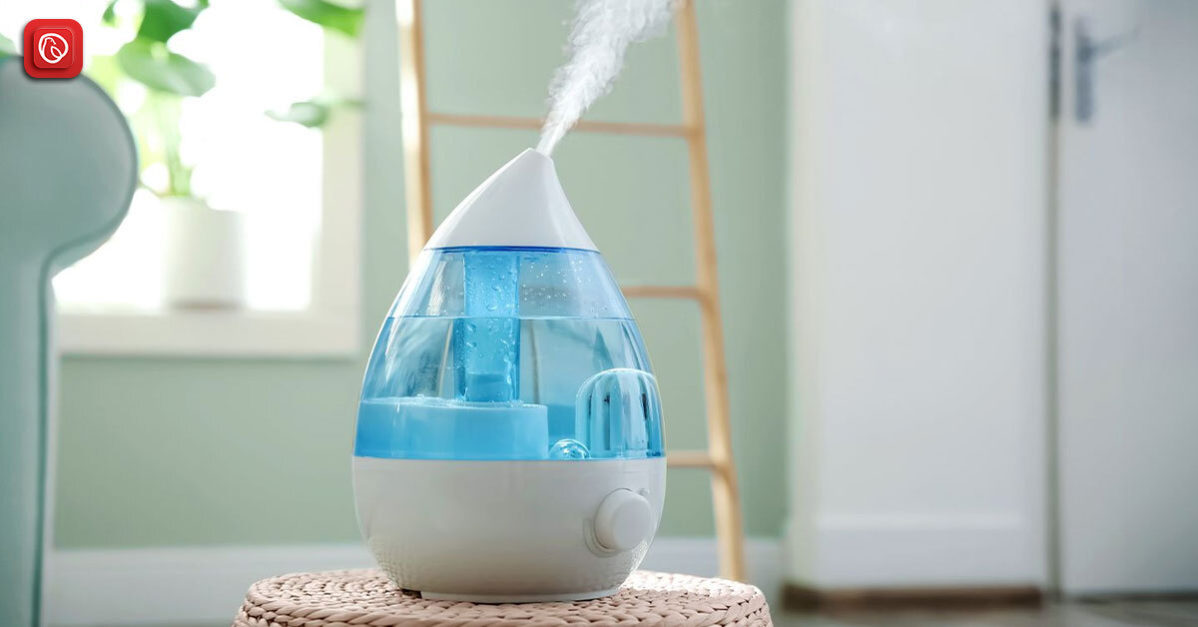In the diverse climate of Pakistan, maintaining optimal indoor humidity becomes crucial for comfort and health. Humidifiers serve as essential devices in achieving this balance. Humidifiers are devices designed to add moisture to the air in indoor spaces.
They play a vital role in maintaining optimal humidity levels, enhancing comfort and addressing potential health issues associated with excessively dry or humid environments. These appliances are particularly relevant in regions like Pakistan with varying climatic conditions.
In this blog Graana.com examines humidifiers in the Pakistani context, covering types prevalent in the market, outlining their associated advantages, and shedding light on pricing considerations.
Functions of a Humidifier
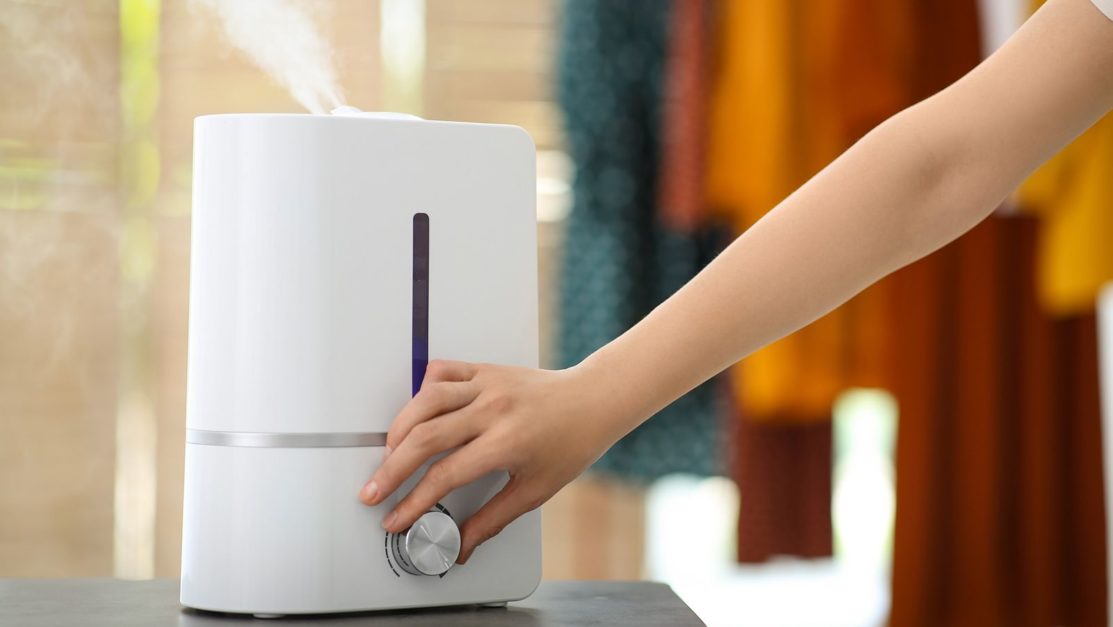
Humidifiers are devices designed to alleviate dryness by adding moisture to the air, preventing discomfort and irritation in various parts of the body. They prove effective in addressing dry skin, nose, throat, and lips, offering relief from symptoms associated with the flu or common cold.
However, it’s crucial to use humidifiers carefully and maintain proper cleaning practices to avoid worsening respiratory problems and other health risks. These devices release water vapour or steam into the air, either in cool or warm mist, achieved by breaking up water into smaller particles.
Beyond inconvenience, low humidity significantly impacts daily comfort and health, causing issues such as bloody noses, dry eyes, and itchy skin. During illnesses like colds or flu, dry air exacerbates symptoms, while also worsening allergies, asthma, and skin conditions. Utilising a humidifier becomes essential in reducing these discomforts by reintroducing moisture into the air.
Types of Humidifiers
The selection of a humidifier is influenced by individual preferences, budget considerations, and the intended area for moisture addition. There are five primary types of humidifiers:
Central Humidifiers
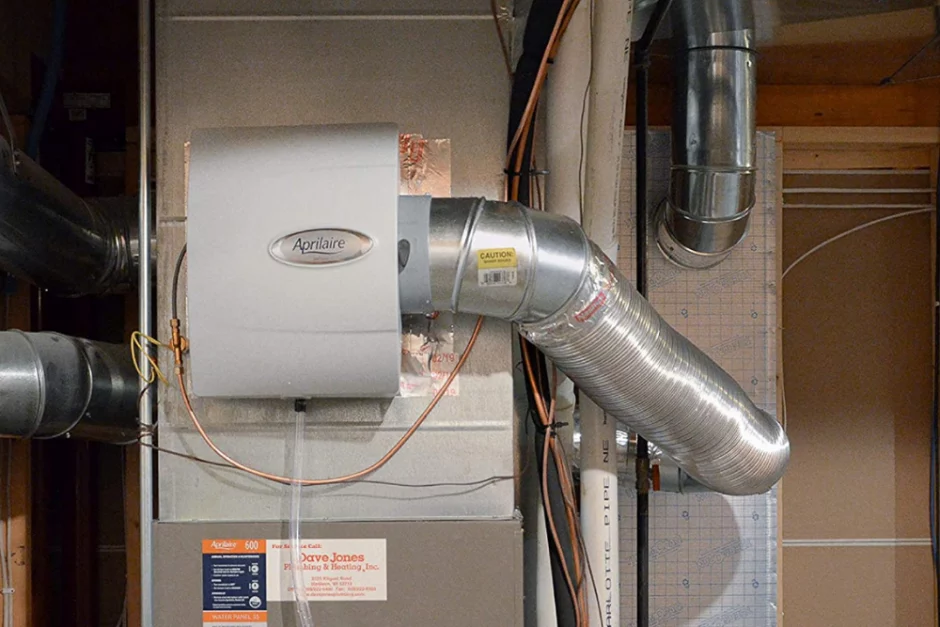
Central humidifiers are integrated into the home’s air conditioning or heating system. While they are relatively expensive, they prove to be the optimal choice for those aiming to humidify the entire house. Unlike traditional humidifiers, central humidifiers eliminate the risk of burns associated with steam emissions.
Evaporators
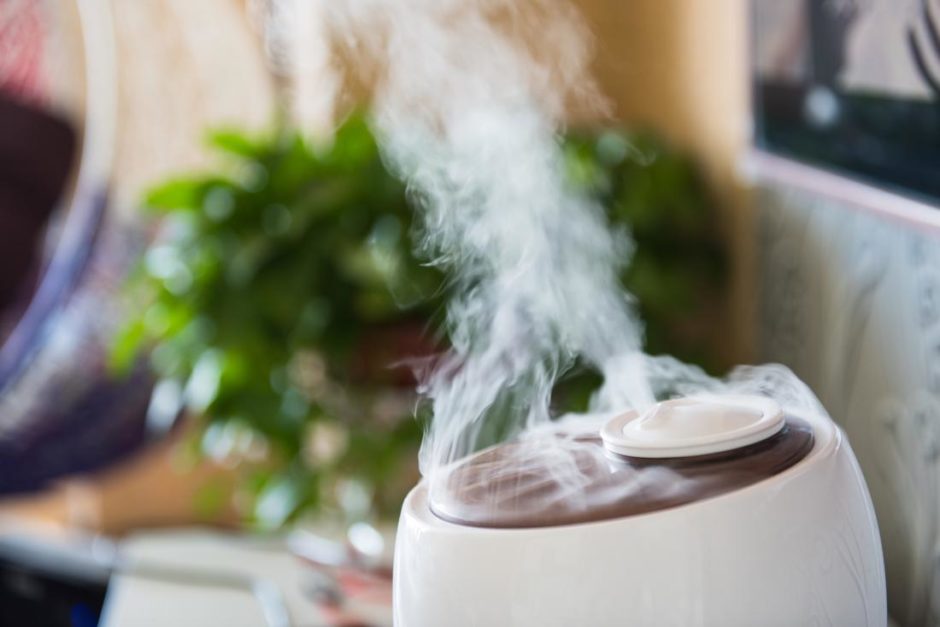
Operating by blowing moisture through a moistened filter, evaporators utilise fans to expel humidity into the air. Although more affordable than central humidifiers, they are limited to humidifying one room at a time. However, a potential drawback lies in the tendency to release excess moisture, which could be problematic for individuals with asthma and may contribute to mould growth.
Impeller Humidifiers
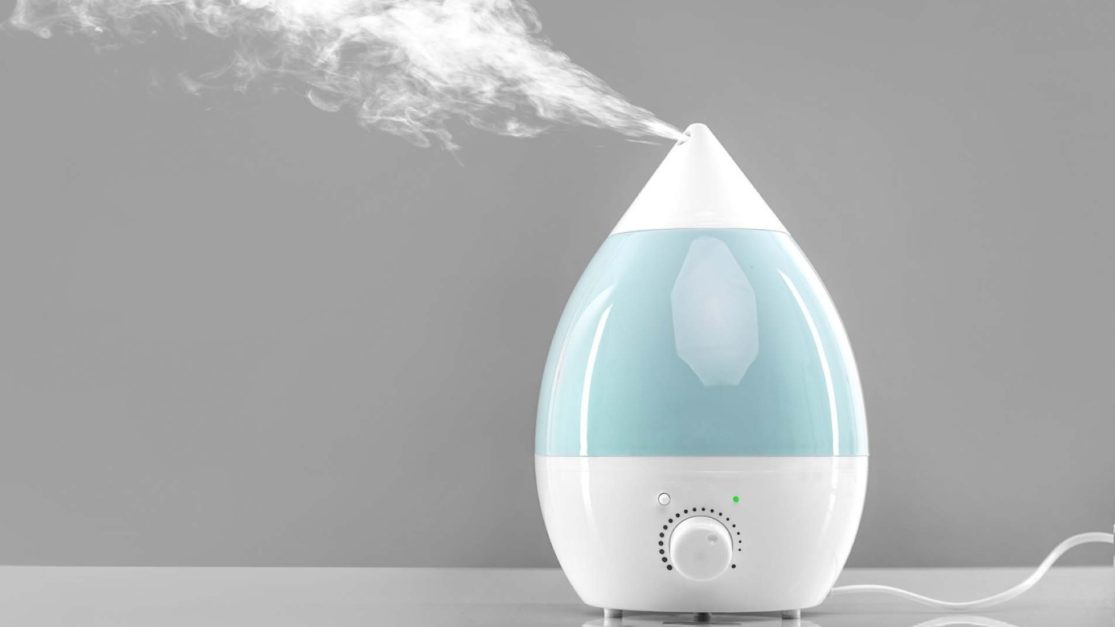
Impeller humidifiers employ rotating disks running at high speeds to disperse cool mist. These units are cost-effective and deemed safer for children, as they eliminate the risk of burns. Nonetheless, similar to evaporators, impeller humidifiers are confined to single-room effectiveness and may pose breathing challenges if overused, particularly for individuals with allergies and asthma.
Steam Vaporisers
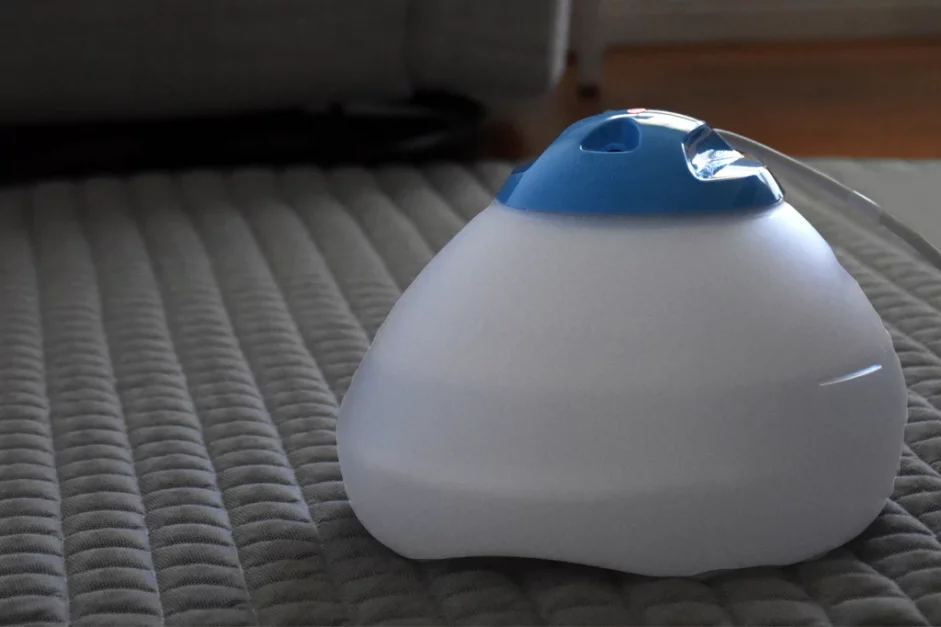
Electrically powered, steam vaporisers heat and then cool water before releasing it into the air. Despite being the most budget-friendly and portable option, they carry a risk of causing burns, making them less suitable for households with children.
Ultrasonic Humidifiers
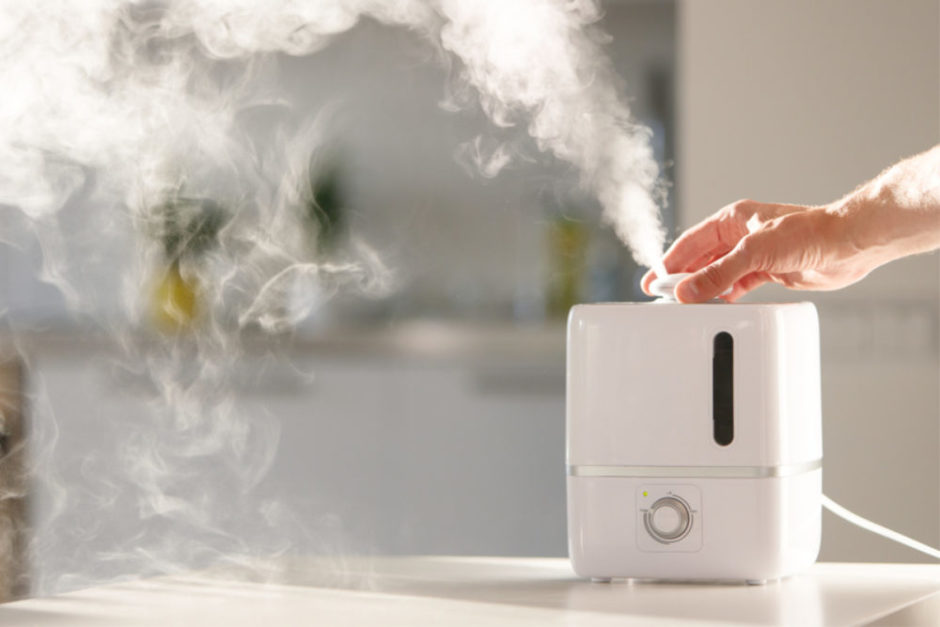
Utilising ultrasonic vibration, these humidifiers produce a cool mist. Available in various sizes and offering both cool and warm mist versions, ultrasonic humidifiers cater to different home requirements. The cool-mist variant is particularly recommended for households with children due to its enhanced safety features.
Benefits of Using Humidifiers
Humidifiers, when used appropriately, offer a multitude of health benefits, contributing to improved well-being. Here are the top 10 advantages associated with the use of humidifiers:
Prevent Colds and Flus
Maintaining indoor humidity levels between 30 and 50 percent can significantly reduce the infectivity rate of airborne viruses like influenza and acts as an air purifier. Humidifiers play a crucial role in achieving this balance, preventing the spread of flu and colds.
Improve Skin Health
Dry air tends to draw moisture from the skin, resulting in irritation and dryness. Humidifiers counteract this effect by increasing air moisture, promoting smoother skin and restoring its natural glow. Even a modest increase in humidity has shown benefits in relieving dry and itchy skin symptoms.
Help With Sinus and Congestion
Humidifiers prove effective in relieving congestion and moistening nasal passages, facilitating easier expulsion of mucus during illness. They are particularly helpful for individuals experiencing sinusitis or related issues caused by dry air.
Soothe a Sore Throat
Dry winter air often leads to painful and scratchy throats. Placing a humidifier in the bedroom can rehydrate the mucous membrane, providing relief and preventing discomfort associated with sore throats.
Relieve Cough
Humidifiers not only reduce the risk of airborne infections but also soothe upper respiratory muscles, providing relief from coughing triggered by dry air.
Reduce Allergies
Higher humidity levels alleviate allergy symptoms by reducing nasal congestion, irritation, and inflammation. However, it’s crucial to maintain humidity below 50% to avoid potential issues like dust mites and mould growth.
Prevent Asthma
Humidifiers absorb asthma triggers, such as allergens, and relieve the upper respiratory tract. They also aid in soothing tissues, reducing symptoms like dry and itchy throat, runny nose, and sinus congestion.
Improve Sleep Quality
Dry air can lead to discomfort during sleep, contributing to insomnia or sleep deprivation. Humidifiers enhance humidity levels, improving sleep quality, and are even integrated into CPAP machines used for sleep apnea patients.
Beneficial for House Plants
Moist air from humidifiers benefits not only humans but also indoor plants. Providing essential moisture to the air helps plants thrive, contributing to improved indoor air quality.
Improve Air Quality
Humidifiers significantly enhance indoor air quality by alleviating dry skin, chapped lips, and other discomforts associated with dry air. They also contribute to better respiratory health, with doctors recommending their use for respiratory illnesses and allergies. Additionally, humidifiers can increase the efficiency of furnaces in winter, creating a more comfortable living environment.
How to Safely Use a Humidifier
Humidifiers, while beneficial, require careful operation to mitigate potential health risks. Here are guidelines on safely using a humidifier:
Manage Humidity Levels
- Maintain humidity between 30 and 50 percent to prevent the growth of bacteria and mould.
- Use a hygrometer to monitor humidity levels.
- Operate the humidifier only when necessary to avoid excessive moisture accumulation.
Use Distilled Water
- Choose distilled water for humidifiers to minimise the release of unhealthy mineral particles, particularly in cool mist machines.
- Regularly purchase distilled water for safe and effective humidifier operation.
Keep Your Machine Clean
- Clean the humidifier after each use, ensuring the water tank is thoroughly dried before the next use.
- Rinse and replace water daily to prevent the use of stagnant water that may harbour moulds or bacteria.
- Address white buildup (scale) in the humidifier by cleaning it every few days with a water and vinegar or hydrogen peroxide mixture.
Replace Filters Regularly
- If applicable, replace filters or other parts as per the manufacturer’s instructions.
- Regularly change the filter in a central humidifier to ensure optimal performance.
Keep Interior Doors Open
- Prevent over-humidification by keeping interior doors open, allowing air to circulate freely.
- Choose a humidifier for a child’s room with caution.
- Avoid humidifiers that boil or heat water due to safety risks.
- Keep cool mist humidifiers clean to prevent the emission of harmful elements.
Risks Associated with Using Humidifiers
Humidifiers offer a convenient method to introduce moisture into the air, yet they come with certain risks that warrant consideration.
Dirty Humidifiers
Humidifiers, by converting water into breathable vapour, can inadvertently spread germs if the water tank is contaminated. Regular and thorough cleaning is essential to prevent potential health issues associated with inhaling the dirty vapour. It is crucial to follow manufacturer instructions for cleaning and avoid allowing water to stagnate in the humidifier. Additionally, timely replacement of filters, if applicable, is recommended to maintain cleanliness.
Excessive Humidity
While some humidity is beneficial, excessively high levels can pose challenges such as breathing difficulties and exacerbation of allergy symptoms. Common allergens like dust mites, mould, and mildew thrive in damp environments. Indoor humidity levels should ideally be maintained between 30 and 50 percent, as per recommendations by the United States Environmental Protection Agency (EPA). Users should monitor humidity levels using a humidity metre and avoid exceeding 60 percent humidity.
Water Quality
Using impure or hard water in humidifiers can lead to several issues. Tap water may contain elevated levels of minerals and particles, which can accumulate in the humidifier and be dispersed into the air. This not only affects the longevity of the machine but also poses inhalation risks for users. It is advisable to use only distilled or purified water to mitigate these concerns and prevent mineral buildup in the humidifier.
Other Health Risks
Despite their benefits in alleviating dry sinuses, humidifiers can potentially worsen certain health conditions. Individuals allergic to dust and mould or those with asthma may experience exacerbated symptoms due to increased humidity promoting the growth of allergens. Additionally, risks of steam burns, especially from units utilising heat, and mould growth in areas of moisture accumulation should be considered.
Basic Tips for Safe Use
To minimise risks associated with humidifier use, adherence to basic guidelines is essential:
- Regular monitoring of humidity levels
- Routine changing of water in the humidifier
- Thorough cleaning of the humidifier as per manufacturer instructions
- Prompt replacement of filters
- Exclusive use of distilled or purified water devoid of minerals
- Cautionary measures when using humidifiers around children, including supervision and maintaining a safe distance
- Adherence to manufacturer instructions for proper operation and maintenance
By following these precautions, users can maximise the benefits of humidifiers while minimising potential health risks.
FAQs
Following are some of the top FAQs regarding humidifiers in Pakistan.
What is a humidifier?
A humidifier is a device designed to add moisture to the air in indoor spaces, typically homes or offices. It helps maintain optimal humidity levels to alleviate dryness and improve overall comfort.
Why do I need a humidifier?
Humidifiers are beneficial for various reasons, including relieving dry skin, soothing irritated nasal passages, reducing static electricity, and preventing damage to wooden furniture caused by dry air.
What types of humidifiers are available?
Common types of humidifiers include evaporative humidifiers, ultrasonic humidifiers, warm mist humidifiers, and cool mist humidifiers. Each type operates differently and offers distinct advantages.
How do I choose the right humidifier for my needs?
When selecting a humidifier, consider factors such as room size, desired humidity level, noise level, ease of maintenance, and any specific features you require, such as built-in humidistats or aromatherapy capabilities.
Are there any health benefits to using a humidifier?
Using a humidifier can help alleviate symptoms of dry air-related conditions such as dry skin, chapped lips, sinus congestion, and sore throat. It can also aid in managing respiratory conditions like asthma and allergies by maintaining optimal humidity levels.
How do I clean and maintain my humidifier?
Regular cleaning and maintenance are essential to prevent mould and bacteria growth in humidifiers. Follow the manufacturer’s instructions for cleaning, including rinsing the water tank, disinfecting components, and replacing filters as needed.
Can I use tap water in my humidifier?
While tap water is generally safe to use, it may contain minerals and impurities that can accumulate in the humidifier and affect its performance. Using distilled or demineralized water is recommended to prevent mineral buildup and ensure clean mist output.
How do I know if my humidifier is working properly?
Signs of a properly functioning humidifier include a steady mist output, maintained humidity levels in the room, and no visible signs of mould or mineral buildup. Regularly check the humidity level with a hygrometer to ensure optimal performance.
Can I leave my humidifier running all day and night?
While it’s generally safe to run a humidifier continuously, it’s essential to monitor humidity levels to avoid over-humidification, which can lead to mould growth and other issues. Follow manufacturer recommendations and adjust settings as needed.
Are there any safety precautions I should take when using a humidifier?
To ensure safe operation, place the humidifier on a flat, stable surface away from direct sunlight and heat sources. Keep electrical cords and outlets dry, and regularly check for any signs of damage or malfunction. Additionally, follow all safety guidelines provided by the manufacturer.
This was all about humidifiers in Pakistan. For more information, visit Graana.com.
